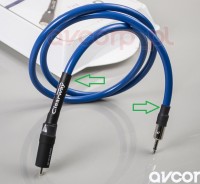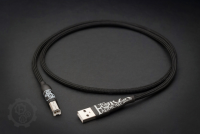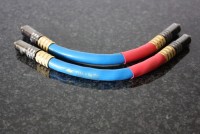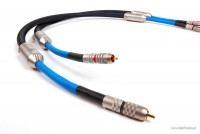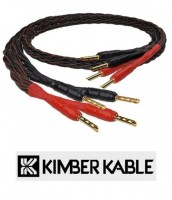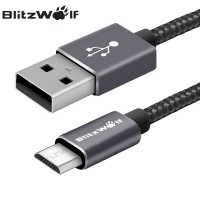FAQ
TL;DR: Glue‑lined heat‑shrink adds sealing and strain relief; thin‑wall non‑glue stays more flexible. Typical 2:1 shrink ratio. “The ones with glue are stiffer precisely because of the glue.” [Elektroda, Jawi_P, post #16947896]
Why it matters: This FAQ helps hobbyists and installers choose, apply, and source the right tubing for tidy, durable cable terminations.
Quick Facts
- Glue‑lined tubing has an internal hot‑melt adhesive that bonds and seals cable joints; expect higher cost than plain tubing. [Elektroda, zdzisiek1979, post #16946938]
- After shrinking, tubing protects fixed connections but loses elasticity; don’t expect it to flex like the original jacket. [Elektroda, KaW, post #16947354]
- Typical shrink ratio is 2:1; lower ratios tend to feel more flexible, and thin‑wall “flex” types exist. [Elektroda, Jawi_P, post #16947896]
- Adhesive‑lined pieces are thicker/stiffer and may show slight glue squeeze‑out at the ends; degrease surfaces first. [Elektroda, zdzisiek1979, post #16947332]
- You’ll find glue‑lined tubing more readily at electrical wholesalers than generic electronics shops. [Elektroda, zdzisiek1979, post #16946938]
What’s the difference between glue‑lined and non‑glue heat‑shrink?
Glue‑lined tubing has a hot‑melt adhesive inside that melts during shrinking and fills gaps, creating a sealed, waterproof joint. Non‑glue tubing simply tightens on the cable and offers mechanical and cosmetic protection without sealing. Use glue‑lined where you need moisture resistance or strain relief at cable splices; use non‑glue for basic insulation and bundling. “Sealing with such a pipe is hermetic.” [Elektroda, zdzisiek1979, post #16946938]
Is it normal to see tiny gaps after bending a heat‑shrinked cable?
Yes. After shrinking, tubing becomes less elastic, so small gaps can appear when you bend the cable near the transition. That cosmetic change does not always indicate a failed joint. For improved conformity at bends, consider flexible thin‑wall types or adhesive‑lined versions, applied to a clean, degreased jacket. [Elektroda, KaW, post #16947606]
Should I use glue‑lined tubing on audio and power cables?
Use glue‑lined tubing when you want sealing or added strain relief, such as at splices or connectors exposed to movement or moisture. It will be thicker and stiffer, which helps support the transition but reduces flexibility. Many builders report good results after proper surface prep and heat control. [Elektroda, zdzisiek1979, post #16947332]
What shrink ratio should I pick for flexibility?
Choose 2:1 for common work; it typically feels more flexible than higher‑ratio, thicker options. Flexible thin‑wall variants exist if bending compliance matters. If you need a tight seal over large diameter changes, go higher ratio and accept stiffness. "The ones with glue are stiffer precisely because of the glue." [Elektroda, Jawi_P, post #16947896]
Where can I buy glue‑lined heat‑shrink tubing?
Electrical wholesalers and electrical‑focused stores are more likely to stock glue‑lined tubing and joint kits than small hobby electronics shops. They target installers who need sealed splices and outdoor‑rated terminations. Expect higher prices than plain heat‑shrink. [Elektroda, zdzisiek1979, post #16946938]
How do I apply adhesive‑lined tubing for a clean, sealed finish?
- Degrease and dry the cable insulation and connector shell.
- Slide tubing over the joint; heat evenly from the center outward.
- Watch for light adhesive squeeze‑out at the ends; stop heating once uniform.
This yields a neat, sealed transition and resists capillary moisture ingress. [Elektroda, zdzisiek1979, post #16947332]
Why does heat‑shrink feel stiff after installation?
Heat‑shrink is designed to protect fixed connections. Once recovered, the polymer loses elasticity relative to the original jacket. This stiffness helps support the joint but limits repeated flexing. Plan your strain relief and bend path accordingly to avoid stressing conductors. [Elektroda, KaW, post #16947354]
What’s a strain relief and why does bend length matter?
A strain relief is a molded or sleeved section that forces a gentle cable bend so forces bypass the solder joints. Well‑designed reliefs guide a 180° turn over about 10–15 mm, reducing stress at the connector. Short, stiff reliefs are cosmetic and can still fatigue wires. [Elektroda, 3080496, post #16949108]
My laptop/charger cable breaks right past the bend—what’s happening?
If the molded relief is too short and stiff, the cable only tilts about 90°, concentrating strain at the relief edge. Repeated flexing then breaks conductors just beyond the support. Longer, more compliant reliefs distribute bend over a greater length and last longer. [Elektroda, ^ToM^, post #16951657]
Do audiophile cables need special heat‑shrink?
No special type is required. Use the same selection rules: sealing, flexibility, and strain relief needs. One commenter noted, tongue‑in‑cheek, there’s “more magic than physics” in some audiophile builds. Focus on sound mechanical design and proper application instead. [Elektroda, Ronin64, post #16947742]
Will a heat‑shrink sleeve alone replace a proper molded strain relief?
No. A simple sleeve can look neat but often lacks the gradual bend control of a quality molded relief. Several users reported cable breaks when relying on short, stiff sleeves behind plugs, especially in portable gear. Reserve simple sleeves for stationary setups. [Elektroda, 3080496, post #16952968]
Any brand or sourcing tips when testing flexibility options?
Try multiple manufacturers and clearly labeled types from distributors. TME, for example, lists thin‑wall and various shrink ratios, making side‑by‑side trials easy. Buy small assortments to evaluate feel, seal quality, and appearance before standardizing. [Elektroda, Jawi_P, post #16947896]
Is adhesive squeeze‑out a defect?
A slight bead at the ends is normal on glue‑lined pieces and indicates proper wetting. Excessive ooze suggests overheating or too much wall thickness for the application. Clean surfaces first to ensure the glue grips uniformly. [Elektroda, zdzisiek1979, post #16947332]
Are Apple‑style hard sleeves reliable for mobile cables?
Reports suggest very hard, short sleeves can fail in portable use because they don’t guide a gentle bend. Users making portable audio cables with similar sleeves saw frequent breaks. Opt for longer, compliant reliefs or flexible boots for mobile gear. [Elektroda, 3080496, post #16952968]
Do real products ever last with hard sleeves?
Some do. One user’s BlitzWolf USB cable with a thicker, harder sleeve survived daily use for a year, crediting material quality. Still, design and materials both matter; stiffness alone isn’t a guarantee of durability. [Elektroda, Argennto_1, post #16954179]



